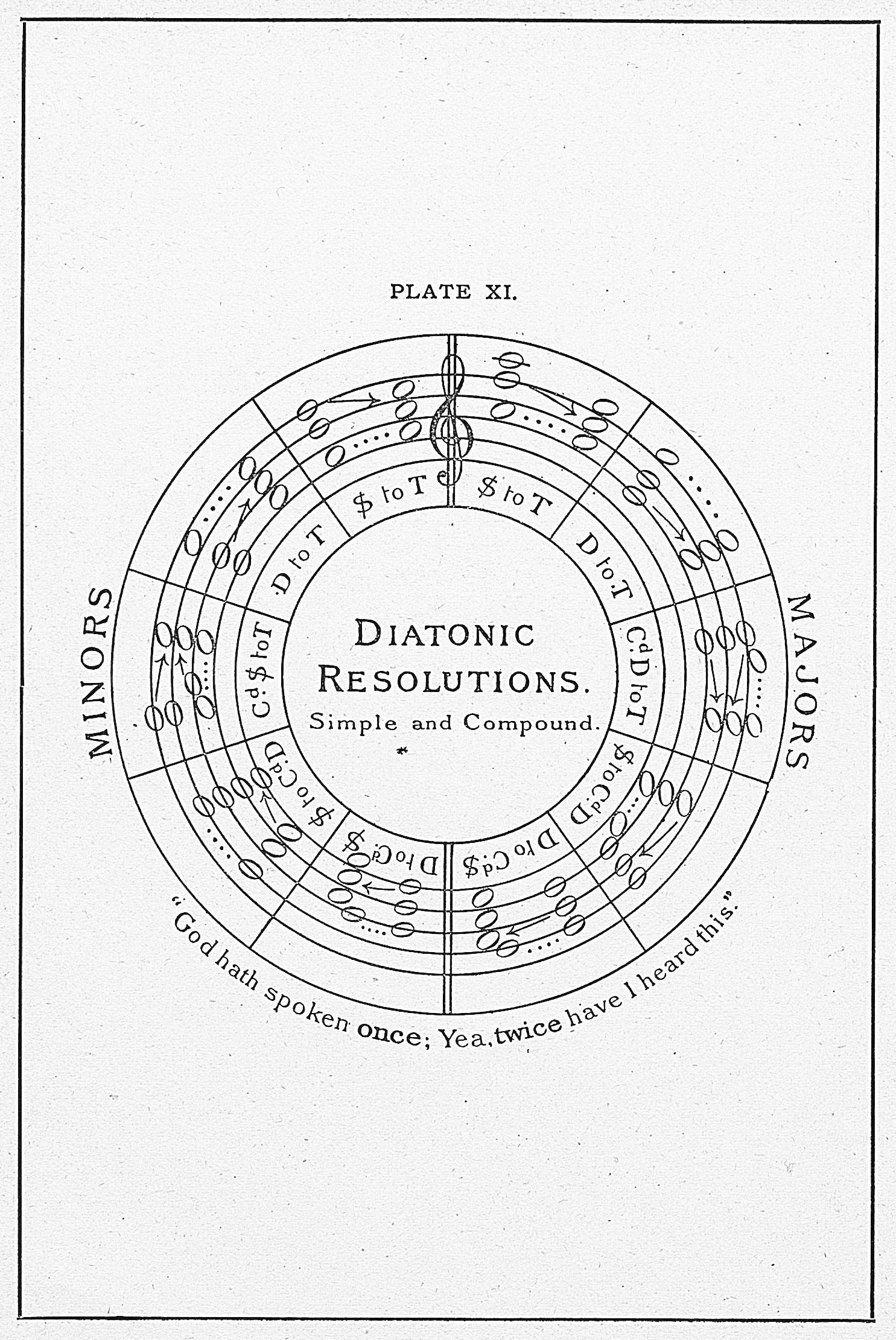
In the major system, when the tonic chord follows the subdominant one, there is one semitonic progression to the middle of the tonic, and one note in common with the root, so these two chords are linked together in different ways. When the tonic chord follows the dominant one, there is one semitonic progression to the root of the tonic, and one note in common with its top, so these two chords also are linked together in two different ways. When the tonic chord follows the compound dominant, i.e., the dominant seventh, there are two semitonic progressions, one to the middle and one to the root, and one note in common with its top, so these two are linked together in the same two ways; but the semitonic progression being double gives this resolution great urgency. And now we come to the two chords, the subdominant and dominant, which have no note in common, and must, when they succeed each other, be helped to come together. Nature teaches us how this is to be done by a process of borrowing and lending which will establish between them a similar relationship to that which keeps the continuity of the other chords in succession. We have seen that the top of the subdominant and the root of the tonic are a note in common to these chords, and so the top of the tonic and the root of the dominant also are a note possessed in common by these two chords. In like manner in this disjunct part, when the dominant follows the subdominant, the root of the subdominant is lent to the top of the dominant, and thus they come to have a note in common. The top of the [Scientific Basis and Build of Music, page 111]
subdominant also moves by semitonic progression to the middle of the dominant, and so, like the simple chords, they are brought into continuity. When the subdominant follows the dominant, the top of the dominant is lent to the root of the subdominant, and they come to have also a note in common; and the middle of the dominant moves by semitonic progression to the top of the subdominant; and thus resolving continuity is established between them.
With perfect duality of response does resolution of chords go on in the minors. When the tonic chord follows the subdominant one, they have for their note in common A, i.e., in the key of A; and the middle of the subdominant moves by semitonic progression to the top of the tonic. When the tonic chord follows the dominant one, the top of the tonic and the root of dominant E is a note in common, and the top of the dominant goes by semitonic progression to the middle of the tonic. These simple chords are thus linked together exactly with the same degree of continuity as the simple chords of the major. When the tonic chord follows the compound subdominant, this compound chord, like the compound dominant in the major, has two semitonic progressions - one to the top and one to the middle of the tonic - and they have one note in common. When the compound dominant follows the subdominant, the root of the subdominant is lent to the top of the dominant, and thus a note in common is created, and the middle of the subdominant moves by semitonic progression to the root of the dominant. When the compound subdominant follows the dominant, the top is lent to the root of the subdominant, creating a note in common between them, and the root of the dominant goes to the middle of the subdominant in semitonic progression. This is the way of Nature. The unbroken continuity of her ways is perfectly illustrated in the linked sweetness and kinship of chords in a key; or when one key passes by modulation to another key; and that through all the chords and all the keys. We shall see wondrously more of this when we come to the study and contemplation of the Chromatic System of Chords. [Scientific Basis and Build of Music, page 112]
See Also
disturbance of atomic equilibrium
Ramsay - The Chromatic Chord a Universal Joint for Resolution
Ramsay - The Diatonic Germ of the Chromatic Chord
